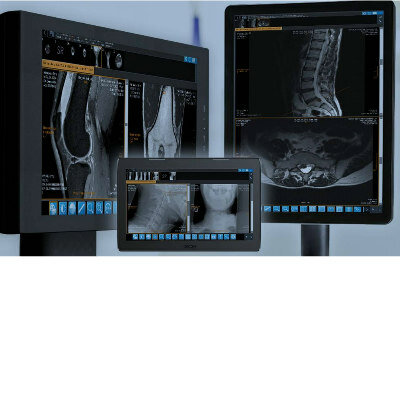MR Spectroscopy Reveals Early Diagnostic Insights into Alzheimer’s Disease
By MedImaging International staff writers
Posted on 21 May 2012
Investigators have developed a noninvasive brain imaging technique to measure specific brain chemical alterations, providing a signature of the early stages of Alzheimer’s disease (AD) from the hippocampal region of the brain. Posted on 21 May 2012
Pravat K. Mandal, PhD, and his colleagues published a study on May 4, 2012, in the Journal of Alzheimer’s Disease. “Alzheimer’s disease has become a silent tsunami in the aging population,” said Dr. Mandal, who is associated with the National Brain Research Center (Gurgaon, India), and Johns Hopkins University School of Medicine (Baltimore, MD, USA). “This discovery of a diagnostic technique that requires no blood work or radiation, and that can be conducted in less than fifteen minutes, may offer hope to Alzheimer’s disease patients and their families.”
Dr. Mandal and his colleagues examined the brains of normal controls, AD patients, and patients with mild cognitive impairment (MCI) using multivoxel 31P magnetic resonance spectroscopy (MRS) imaging, along with a sophisticated analytic tool, to evaluate brain chemistry in the hippocampal regions. They observed during their study that the left hippocampus becomes alkaline in AD patients, which is in contrast to the normal aging process in which the brain tends to be more acidic.
Dr. Mandal and his colleagues also identified four brain chemicals that change significantly in pre-Alzheimer and Alzheimer disease patients compared to normal study participants. They are phosphomonoester (PME), the building block of neuronal membrane; phosphodiester (PDE), the membrane degradation product; phosphocreatine (PCr), stored energy for brain functioning; and adenosine triphosphate (ATP). The level of PME is considerably decreased in the left hippocampal areas of these patients, and the levels of PDE, PCr, and ATP are increased.
“In the left hippocampus the increase in pH to the alkaline range, along with statistically significant increases in PDE, PCr, and ATP and decreases in PDE, serve as a promising new biomarker for AD,” noted Dr. Mandal. He and his colleagues plan to carry out longitudinal studies with Alzheimer and Parkinson patients with larger sample sizes to investigate specificity of their test. “It is our hope that such clinical research, using cutting-edge technology, may give new hope to cognitively impaired patients for an earlier and more predictable AD diagnosis,” they stated.
Related Links:
National Brain Research Center
Johns Hopkins University School of Medicine














